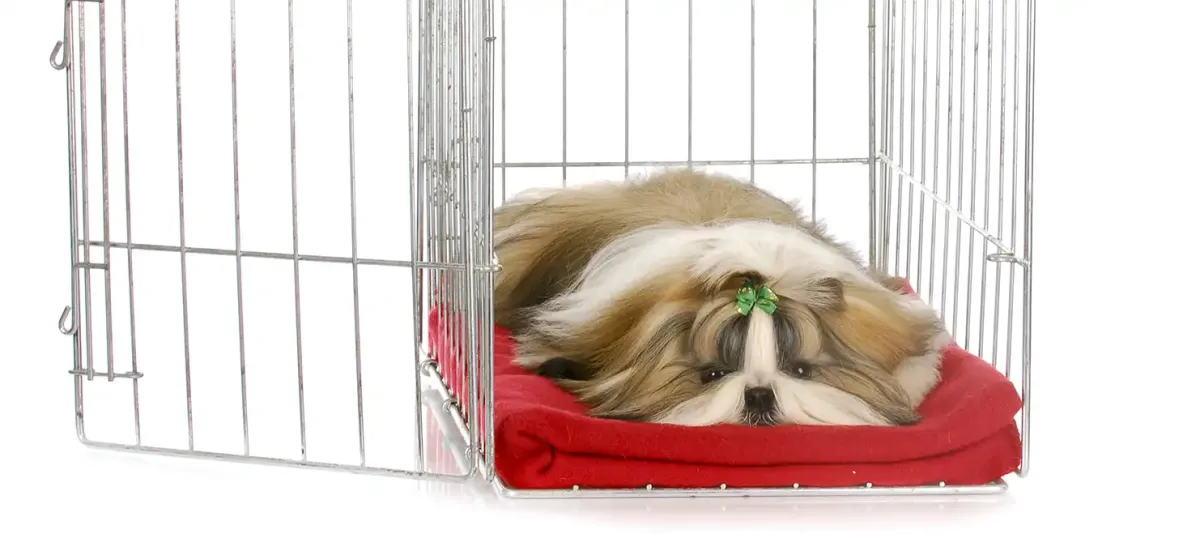Crate Training

Why crate-train your dog?
A crate is your dog's place of safety and comfort. Like a den in the wild, dogs prefer to settle into a dark, quiet, warm space. He is safe from kids, strangers, other animals and he is also safe from getting into mischief around the house if left to wander, unsupervised. A crate becomes his safe place for travel as well. It makes transitions to unfamiliar environments much easier on him. If toileting habits are not yet established, a crate is a great tool for minimising any accidents, as most dogs prefer to eliminate away from their sleeping area.
The best kind of crate for your dog
A crate should be only large enough for your dog to stand up and turn around. Any larger and you may find your dog toileting in a corner where he does not sleep. For puppies that will grow into larger dogs, partition the crate so his space feels snug yet you can enlarge it as he grows. To make him feel safe and secure, it may need to be dark and covered. A plastic moulded crate is best as it is sturdy and light and tends to feel more enveloping, like an underground den. If you have a wire crate, cover it with a blanket to give it that cosy, safe feeling; just ensure that your pup doesn't try to pull at and chew the cover.
How to crate-train your dog
Put your crate in a quiet corner of your house, like a spare room or office. It should not be positioned in an area of high traffic or activity like an entry way or kitchen. It is meant to be a safe haven where he can rest and relax.
Initially, leave the crate door open until your dog starts to trust his new environment. Put a bed, toys, and food treats inside to make it more enticing and enjoyable. Allow your dog to go in and out to have as many positive experiences with his new den as possible.
Begin shutting the door while he's enjoying some food or a toy and at night to sleep. For young puppies, ensure they are allowed out for toileting purposes as they have yet to develop the control they need to spend all night in their crate. Keep a journal of your pup's toileting habits so you can predict when he may need to go out. Don't allow his whining or barking to dictate when he comes out. Let him out when he is calm and relaxed.
Begin to put him into his crate at various times while you are home so he doesn't associate it only with you leaving the house. Use a word like "bed", said in a light tone, as you lead him to his crate. Praise him for going in.
Never use the crate as a punishment. It is meant to be your dog's safe and cosy retreat and he cannot understand the connection between his bad behaviour and being put into a "time out."
If your dog appears stressed in the crate, he may have separation anxiety and will require professional help. Contact your local Bark Busters Dog Behavioral Therapist to discuss your situation and what can be done to help.
Recent Articles
- Easter Holidays - Keeping our dogs safe around food
- Horticultural Horrors for Hounds
- Understanding Dog Body Language
- Heatstroke in dogs - know the signs and what to do
- Preventing Separation Anxiety When Returning To Work
- Separation Anxiety
- Managing your time at home with your dog
- Top 10 Indoor Games for your Dog
- Working from home with your dog
- COVID-19 Social Distancing and Self Isolation
